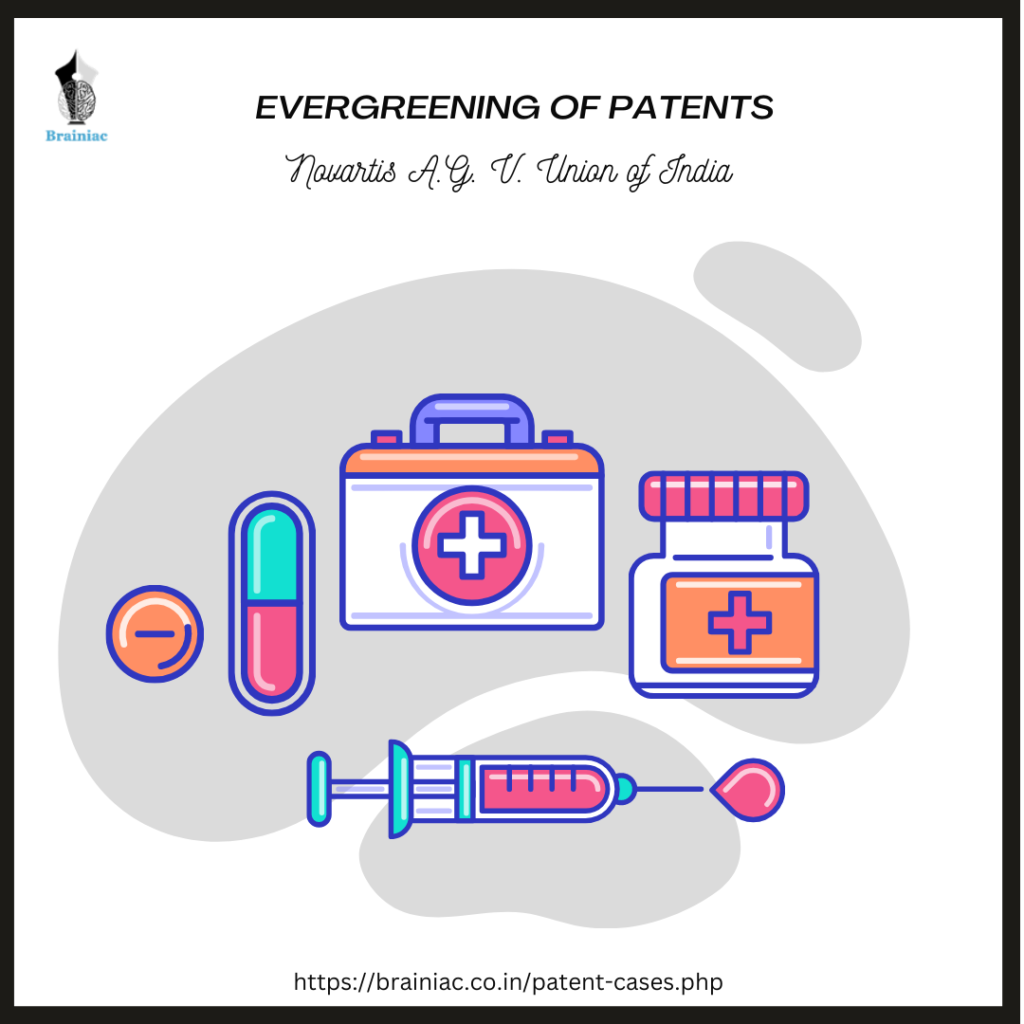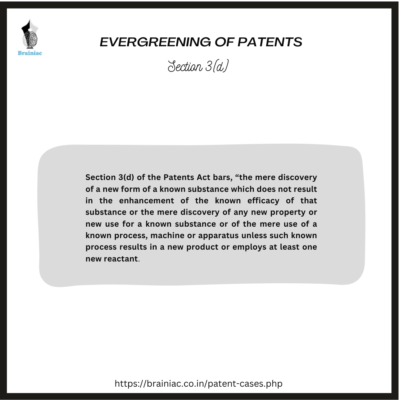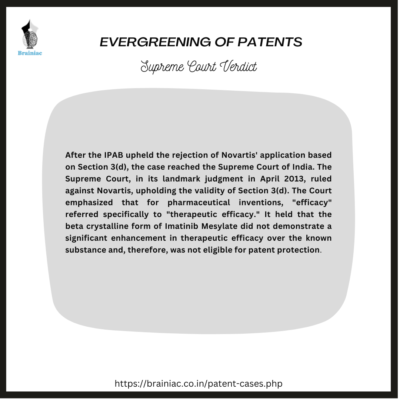Introduction:
The Novartis v. Union of India case is a landmark judgment in Indian patent law that has had a profound impact on the interpretation and application of patentability criteria in the country. This legal battle centers around Novartis’ patent application for the cancer drug Glivec (Imatinib Mesylate) claiming that it was more effective in fighting leukaemia and has far-reaching implications for the pharmaceutical industry and access to affordable medicines. In this article, we will delve into the details of the case, its implications, and the current position of the judgment
Background of the Case:

To understand the Novartis case, it is essential to grasp the significance of intellectual property and patents. Intellectual property grants exclusive rights to inventors and creators, protecting their innovations and encouraging further innovation. Patents, a subset of intellectual property, provide statutory rights to inventors, granting them the ability to exclude others from making, using, or selling their inventions for a limited period.
The Patent Application for Glivec:
Novartis, a leading multinational pharmaceutical company, filed a patent application for the beta crystalline form of Imatinib Mesylate, the active ingredient in the cancer drug Glivec. Novartis claimed that this new form of the drug exhibited enhanced therapeutic efficacy compared to the known substance, Imatinib. This application set the stage for a critical examination of patentability criteria and the concept of evergreening.
Section 3(d) of the Indian Patent Act 1970
Section 3(d) is a provision within the Indian Patent Act 1970 specifically designed to prevent the practice of evergreening. It states that inventions involving mere discovery of a new form of a known substance, or a new property or use of a known substance, or the mere use of a known process, machine, or apparatus, unless they result in a significant enhancement in efficacy, are not considered patentable. The provision emphasizes the necessity for inventions to demonstrate a genuine enhancement in efficacy to be eligible for patent protection.
Rejections:
The patent application for Glivec faced challenges and rejections. The Chennai Indian Patent Office rejected Novartis’ application, citing lack of novelty and non-obviousness. Moreover, it invoked Section 3(d) of the Indian Patent Act, which states that inventions involving the mere discovery of a new form of a known substance, unless they result in a significant enhancement in efficacy, are not considered patentable. This provision aims to prevent the practice of evergreening, where pharmaceutical companies make minor modifications to extend patent protection and maintain monopolies.
Novartis’ Challenge:
Novartis challenged the validity of Section 3(d), arguing that it violated the Agreement on Trade-Related Aspects of Intellectual Property Rights (TRIPS) and the fundamental right to equality under the Indian Constitution. The case was transferred to the Intellectual Property Appellate Board (IPAB) for consideration and a final decision. But the IPAB also rejected the application upholding the Patent Office’s decision.
Supreme Court Proceedings and Verdict:
After the IPAB upheld the rejection of Novartis’ application based on Section 3(d), the case reached the Supreme Court of India. The Supreme Court, in its landmark judgment in April 2013, ruled against Novartis, upholding the validity of Section 3(d). The Court emphasized that for pharmaceutical inventions, “efficacy” referred specifically to “therapeutic efficacy.” It held that the beta crystalline form of Imatinib Mesylate did not demonstrate a significant enhancement in therapeutic efficacy over the known substance and, therefore, was not eligible for patent protection.
Implications of the Novartis Judgment:
The Novartis judgment has significant implications for the prevention of evergreening and the promotion of access to affordable medicines. It strikes a balance between protecting intellectual property rights and safeguarding public health interests. By setting a high bar for patentability and emphasizing the importance of genuine therapeutic enhancements, the judgment curtails unwarranted patent monopolies and fosters competition in the pharmaceutical sector.
The Legacy of the Novartis Case:
The Novartis case serves as a significant milestone in Indian patent law, highlighting the balance between intellectual property rights and public health considerations. It reaffirms India’s commitment to promoting access to affordable medicines and preventing the undue extension of patent monopolies through evergreening practices.
Conclusion:
The Novartis v. Union of India case remains as a key judgment in Indian patent law, clearly demonstrating the importance of actual medicinal efficacy for patentability. It has had profound consequences for the pharmaceutical sector, finding a balance between intellectual property rights and public health concerns. The verdict continues to impact the current situation of patent law in India, leading subsequent judgements and ensuring access to affordable medications for millions of people.





